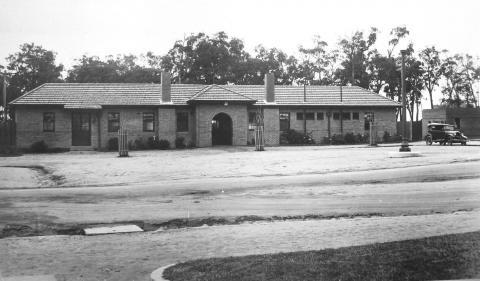Yallourn Railway line was opened in 1922 as a branch line headed north from the main Gippsland line, built to transport goods to and from the Power Station and Briquette Factory. People would often walk the line collecting the briquettes that had fallen from the wagons, they would use the briquettes to heat their homes during the winter.
In 1954, Queen Elizabeth II visited the valley she arrived at Yallourn by train on the original Hernes Oak loop line. By 1955 a new line was constructed from Moe as the old Hernes Oak line was taken out of service due to the expansion of the open cut when the main line to Melbourne was completed. The old route via Hernes Oak was initially retained with empty trains, using it with loaded trains using the new line to return to Melbourne.
A new signal box at Yallourn marshaling yard was opened in December 1955, allowing two way operation on the new line, the old line falling into disuse but not removed until March 1957 when the SECV begun to expand the Yallourn open cut mine across the alignment. At the Hernes Oak end
part of the former line was retained as a dead end siding. Despite the expansion of the mine, briquette traffic began to decline, with power generation at Yallourn growing in demand instead.
Due to the decrease in railway traffic the signal box and interlocking at Yallourn was removed in May 1968, and in April 1974 the substation was taken out of use, overhead power being fed from Moe. In October 1978 electric trains were banned from the line, and in March 1979 work began on
removing the overhead wiring.
The railway station in Yallourn was not a regular passenger line and was only used on special occasions and for school excursions. The line from Moe is now part of the Moe to Yallourn rail trail, constructed in the 1990s, which starts at the Botanic Gardens in Moe and takes a leisurely 8km trail to the Yallourn W Power Station.

